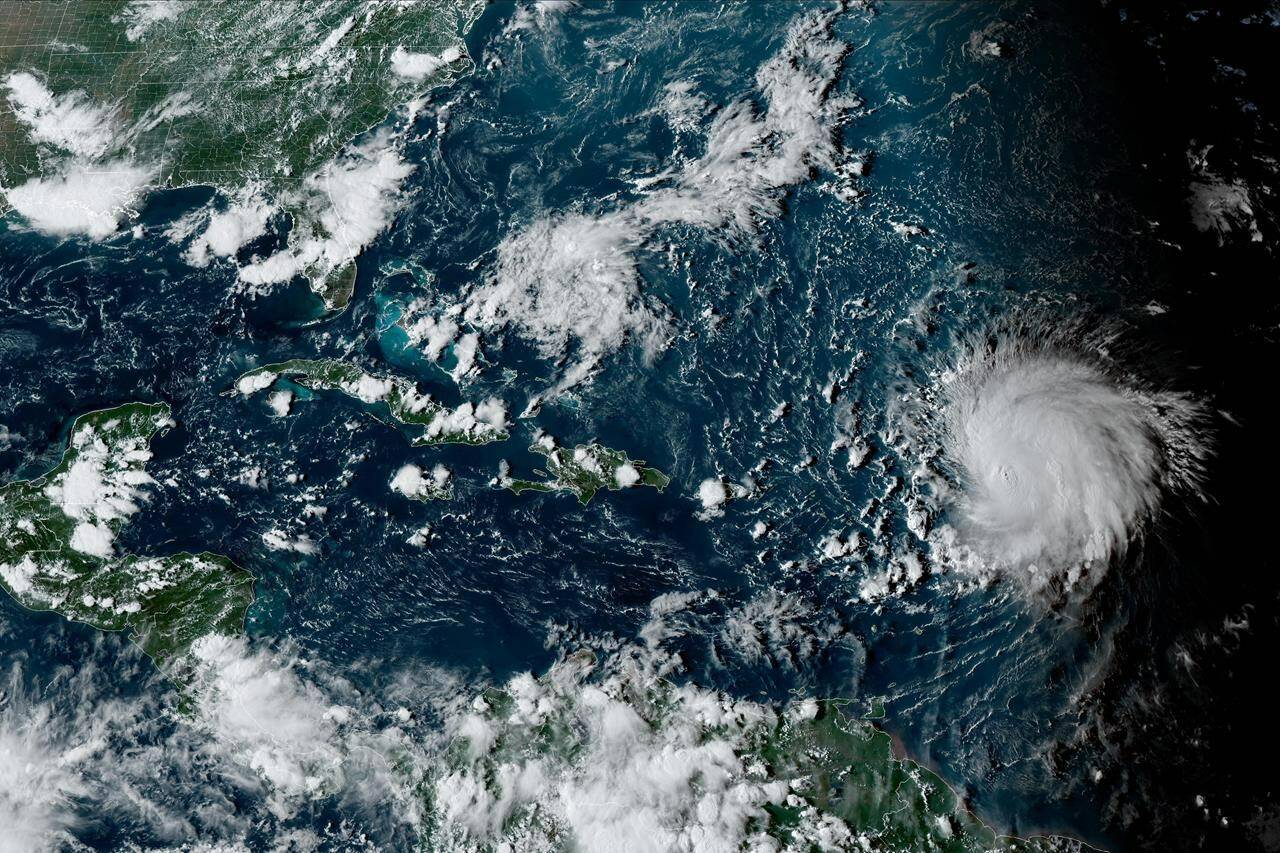Though the track of hurricane Lee remains unclear, anxiety created by powerful storms has been growing on the East Coast — especially in communities that felt Fiona’s wrath last year.
The mayor of Port aux Basques, N.L. says since last year’s hurricane damaged over 100 homes and swept a 72-year-old woman to sea, community members are worried about Lee, as forecasters say it’s uncertain whether the hurricane will even track towards the region.
“The old attitude was, ‘It’s just another storm. We can batten it down,’” Mayor Brian Button said during an interview on Sunday.
“Now, it’s an uneasy feeling.”
In Amherst, N.S., Mayor David Kogon said there’s fear that a tidal surge could flood the Chignecto Isthmus.
“A hurricane timed with a high tide could flood isthmus…which would totally cut us off from New Brunswick and Canada,” he said.
Kogon, who is also a semi-retired doctor, said when he walks around his community he sees more generators in sheds and yards, at the ready in case power goes out, a reminder of how these climate crises are creating anxiety.
“Mental health is a bigger crisis than some other areas of medicine. And so with (climate anxiety) you’ve got another factor that’s going to…put pressure on the health care system,” he said.
The Nova Scotia and New Brunswick governments have asked Ottawa to cover half the cost of protecting the road and railway on the isthmus, but an engineering study released last year has found it could take decades to improve and strengthen the dike system.
As of Sunday, hurricane Lee was creating large swells that were battering several islands in the northeastern Caribbean as it churned through open waters as a Category 2 storm.
Bob Robichaud, a senior forecaster with Environment Canada, said on Saturday that the federal agency will be closely watching in the beginning of the week, when the storm is expected to make its turn to the northwest. He said the agency is expecting the storm to have some form of impact on the region by next weekend.
He said the further east that turning point is, the lower the likelihood of a significant impact on the region. Forecasters will also be closely monitoring a high pressure system over the Great Lakes, hoping that pushes the hurricane further offshore.
In addition, there are factors such as water temperatures Lee will encounter when it tracks north. Robichaud said there were several “patches” of cool water detected over the weekend, which the storm would have to cross to get to the Atlantic, potentially diminishing its power.
However, there are also warmer than normal water temperatures off Nova Scotia’s south shore, where Robichaud said temperatures are about 3 to 4 C higher than historical norms for this time of year.
“There’s still a fairly large spread in the modelling as to what, if any, kind of impacts Lee has in Canada. But, certainly, it is one to keep an eye on as we head into the next few days,” said Robichaud.
Nancy Blair, a registered therapist in Dartmouth, N.,S., said more of her clients are anxious during this hurricane season.
She said that climate change worry may deepen into mental health issues, and advises that people discuss it with others rather than just keeping their fears buried.
“There is nothing wrong with you,” she said during an interview from her office.
“You’re feeling anxiety because something’s wrong…The more people talk about it, the more they can be prepared,”
Blair added Nova Scotians who have already been traumatized by the loss or damage to properties during summer flash flooding are particularly vulnerable to elevated levels of anxiety during hurricane forecasts.
She advises people experiencing this stress to be careful about exposing themselves to exaggerated reports of hurricane danger on social media, and to instead use credible media sources to track storms — if necessary.
In addition, she says exercising, eating well and spending time outside are helpful practices, along with times of quiet, meditation, and rest.
Meanwhile, talking with friends about emergency preparedness is a time-tested strategy in the Maritimes, such as exchanging tips on necessary supplies — including medicine, food and water — needed for 72 hours if power goes out, said Blair.
Amid the trying times, “there’s a need for connection with community,” she said.
“We have a climate cafe group that meets monthly in our neighbourhood where people come and just talk about how they’re feeling. It really helps people. It cuts the sense of isolation.”
READ ALSO: VIDEO: Nova Scotians view damage, begin post-Fiona clean-up
READ ALSO: Hurricane Idalia unleashes fury on Florida after making landfall

